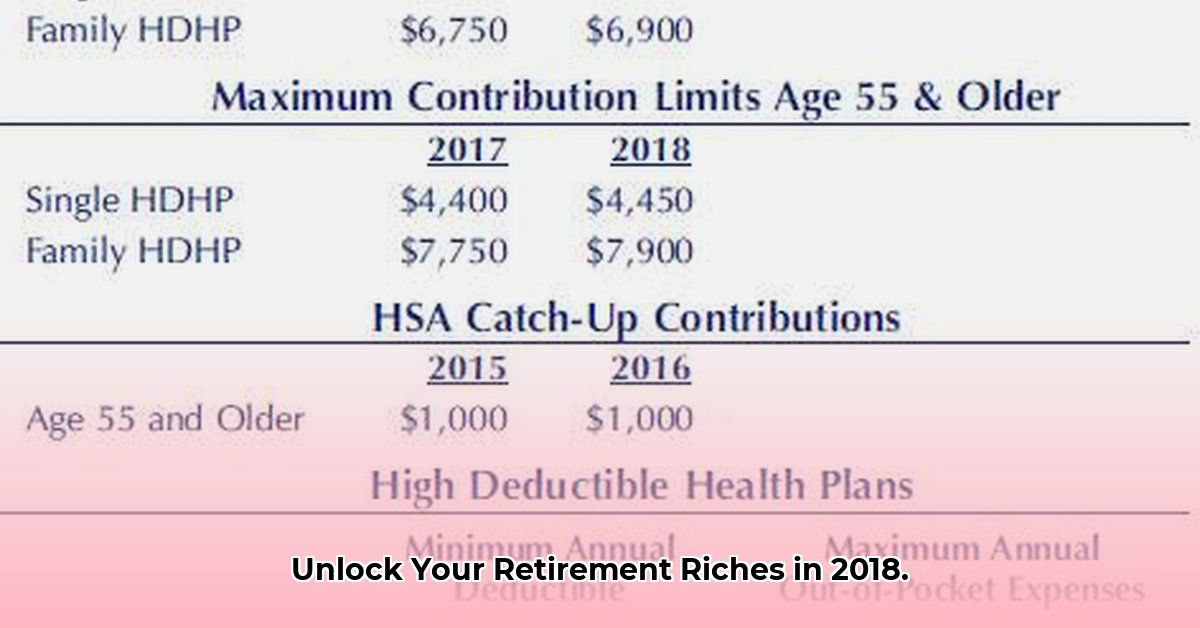
Thinking about retirement? A Roth IRA can be a powerful tool, offering tax-free withdrawals in retirement. But navigating the contribution rules can be tricky. This guide simplifies the process for maximizing your Roth IRA contributions in 2018, covering contribution limits, income eligibility, and strategies like the backdoor Roth IRA. Whether you're a seasoned investor or just starting, we'll help you optimize your retirement savings and avoid costly mistakes.
2018 Roth IRA Contribution Limits: The Basics
In 2018, the maximum Roth IRA contribution was $5,500. If you were age 50 or older, you could contribute an additional $1,000, for a total of $6,500. However, your income significantly impacts your eligibility for these contributions. This is where understanding Modified Adjusted Gross Income (MAGI) becomes crucial. Did you know that many people miss out on maximizing their Roth IRA contributions simply due to a lack of understanding of MAGI?
Income Eligibility: The Role of Modified Adjusted Gross Income (MAGI)
Your eligibility to contribute to a Roth IRA in 2018 depended on your Modified Adjusted Gross Income (MAGI). MAGI isn't simply your Adjusted Gross Income (AGI); it's a modified version, adjusted based on specific income and deduction rules. The IRS uses MAGI to determine eligibility for many tax benefits, and Roth IRA contributions are no exception. A common mistake is confusing AGI with MAGI, leading to incorrect contribution amounts.
Here's a simplified overview of the 2018 income limits:
| Filing Status | Maximum MAGI for Full Contribution | Notes |
|---|---|---|
| Single | $120,000 | Contribution limits may apply even if your MAGI is slightly above this threshold. |
| Married Filing Jointly | $189,000 | Contribution limits may apply even if your MAGI is slightly above this threshold. |
Important Note: These are simplified guidelines. If your MAGI is near or above these limits, your contribution ability may be reduced or eliminated altogether. Consulting a tax professional is recommended for personalized guidance.
Calculating Your 2018 MAGI: A Step-by-Step Guide
Calculating your MAGI can seem daunting, but it follows a structured process. This simplified guide provides a basic framework. Remember, this is for informational purposes only, and professional help is recommended for accuracy.
Steps to Calculate MAGI (Simplified):
Start with your Gross Income: This is your total income before taxes.
Add Taxable Interest and Dividends: Include all income from savings accounts, bonds, and stocks.
Adjust for Specific Deductions and Income Adjustments: This is where it gets personalized. Certain deductions and additions are made based on your specific circumstances. (Consult IRS Publication 590-A for details 1 ). Some common adjustments include student loan interest, educator expenses and others.
The Result: Your MAGI: This figure is your key to determining your Roth IRA contribution limit.
Disclaimer: This is a simplified calculation. For precise MAGI calculation, consult a tax professional or use the official IRS resources.
Traditional IRA vs. Roth IRA: Key Differences
Understanding the core distinctions between Traditional and Roth IRAs is critical to making an informed decision.
| Feature | Traditional IRA | Roth IRA |
|---|---|---|
| Contributions | Tax-deductible (depending on income) | Not tax-deductible (income-based limits) |
| Distributions | Taxed in retirement | Tax-free in retirement |
The best choice depends heavily on your current and projected tax brackets.
The Backdoor Roth IRA: A Strategy for Higher Earners?
If your 2018 income exceeded the Roth IRA contribution limits, the "backdoor" Roth IRA strategy might have been an option. This involved contributing to a non-deductible traditional IRA and then converting it to a Roth IRA. However, this strategy has complexities, potential tax implications, and may be subject to future legislative changes. Professional guidance is strongly recommended.
Important Deadlines: Don't Miss Out!
For 2018 contributions, the deadline was April 15, 2019. Planning ahead is crucial to avoid missing this vital deadline.
Disclaimer
This guide provides general information only and is not financial or tax advice. Always consult a qualified professional for advice tailored your specific financial situation.
Key Takeaways:
- MAGI is Key: Your Modified Adjusted Gross Income (MAGI), not your AGI, determines your Roth IRA contribution limits.
- Professional Guidance: Seek professional advice, especially if your income is near the contribution limits or if you're considering a backdoor Roth IRA.
- Planning is Essential: Understanding the deadlines and rules well in advance is crucial for maximizing your contributions.